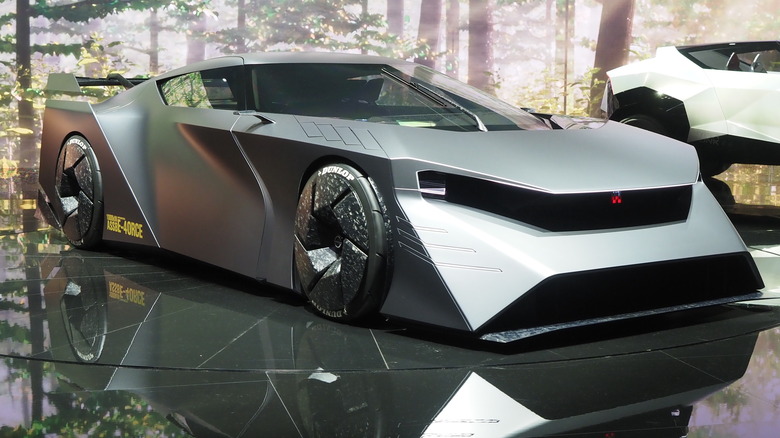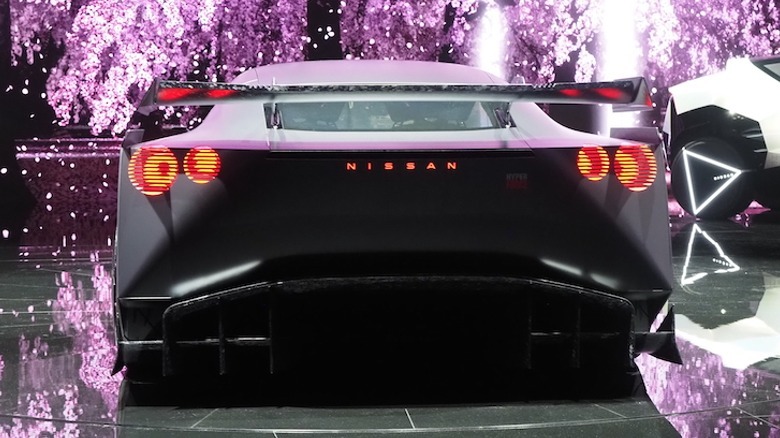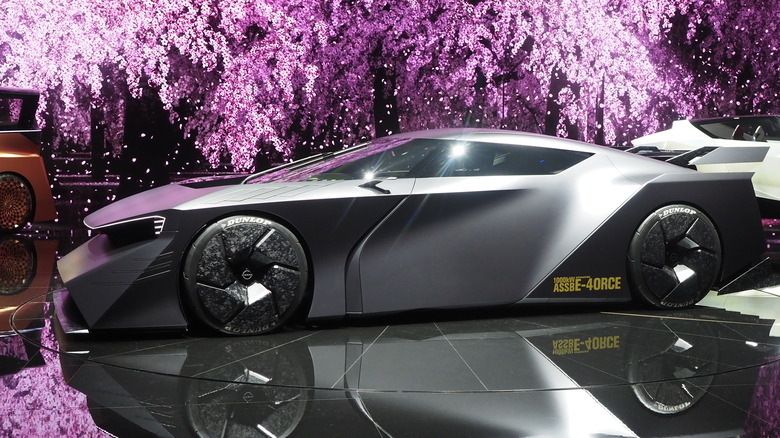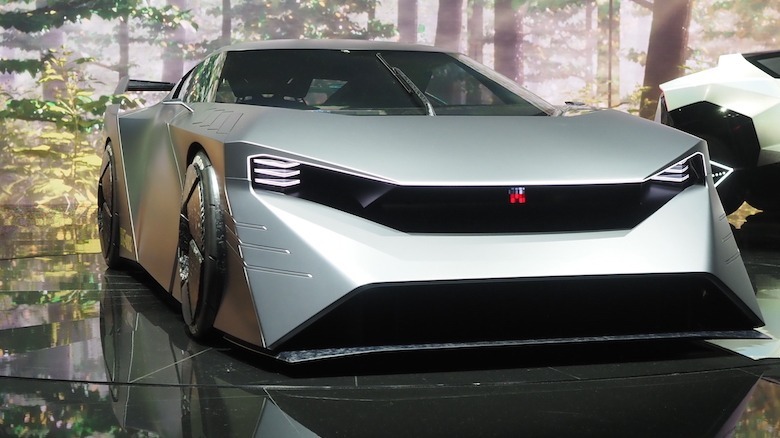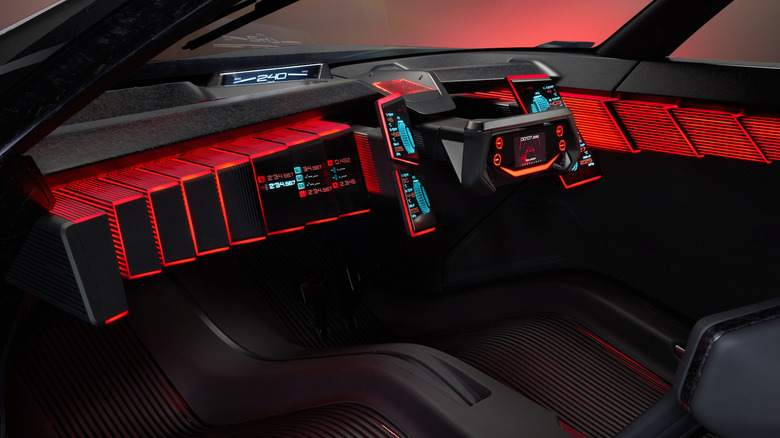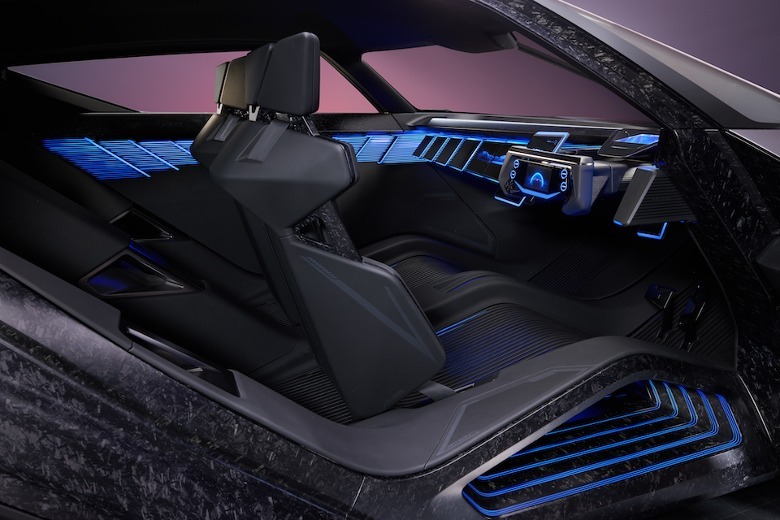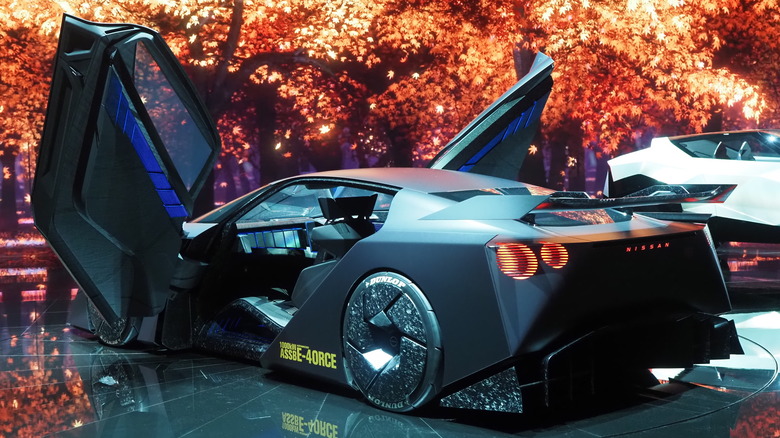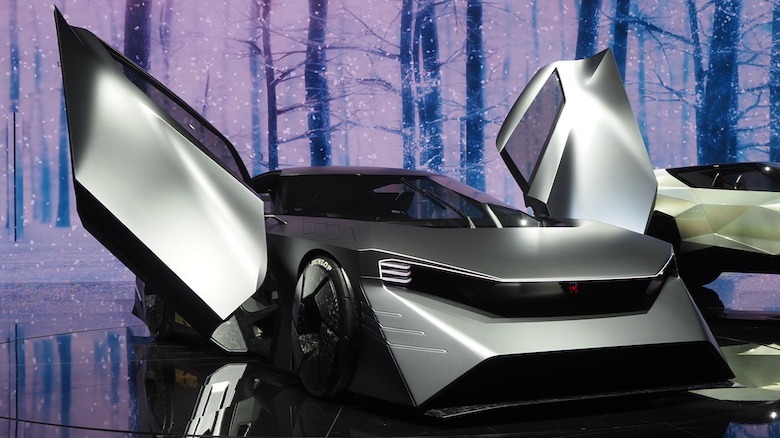Nissan Hyper Force Is A Wild Electric GT-R Concept Built On A Big EV Gamble
Nissan's electrification efforts may be best known in the shape of the affordable Leaf, but the automaker is hoping to show a new side of EVs with the Nissan Hyper Force concept. Unveiled at the Japan Mobility Show, it's a futuristic take on the GT-R, entirely electric and showcasing some of the key EV technologies that Nissan expects to bring a new generation of electric vehicles to market.
It's an uncompromising design, definitely far from what we've seen with the curvaceous and inoffensive 2023 Nissan Ariya. Wide and angular, the Hyper Force blends its curves with slab-sided high-strength carbon bodywork.
While the aggressive design may be the most notable part of the Hyper Force concept, at least at first glance, it's what's powering the coupe that's more important. The all-electric powertrain relies on an all-solid-state battery (ASSB), the cell tech that Nissan is counting on to revolutionize what we expect from — and pay for — in upcoming EVs.
It's all about ASSB
ASSB technology does away with the liquid elements of li-ion batteries. It has the potential for twice the power density of current EV batteries, enabling either vehicles with the same range as today's models but with half the battery pack size, or cars that can travel twice as far on a single charge. ASSB packs can also support faster transfer of power — in and out — making for speedier charging and also providing for high-output projects like the Hyper Force.
Eventually, Nissan says, ASSB will also be cheaper to produce than li-ion batteries. That won't necessarily be the case immediately, however, when the first Nissan ASSB-based EVs launch in 2028. Still, as a fix to things like range anxiety and charging delays, ASSB could well be the magic bullet — assuming Nissan can take the technology from trial manufacturing to mass production.
For the Nissan Hyper Force concept, ASSB is also a potential answer to how electrification and performance vehicles can coexist.
Plenty of power, for the road and the track
Here, Nissan says, there's up to 1,000 kW of power, and its e-4ORCE all-wheel control technology. That relies on a blend of dual electric motors and brake-based torque vectoring for more precise control of which wheel gets power, depending on driving style and road conditions.
There are two driving modes, Nissan says. R — for Racing — lights the cabin up in red, and focuses the driver displays for maximum clarity in a racing situation. Satellite displays around the steering wheel show tire grip, temperature, air pressure, brake temperature, and power distribution, while the cockpit itself stretches around the driver's seat.
In GT — for Grand Touring — mode, the cabin is illuminated in blue. The dashboard retracts, with a simplified infotainment interface showing things like HVAC, audio, stabilizer, and suspension settings. That, Nissan promises, should make for a more comfortable cruiser, despite driver and passenger sitting in high-rigidity carbon fiber bucket seats with four-point belts.
Making Nissan aspirational
Aiding in that GT experience is support for autonomous driving, though Nissan says the "hyper LIDAR" and other sensors are also used during sportier driving. When you're not on the road, a mixed reality simulator experience blends augmented reality and virtual reality, in a customized helmet.
Where, though, this leaves Nissan in terms of production plans remains to be seen. According to Nissan president and CEO Makoto Uchida, the automaker is hoping to get feedback on just how the Hyper Force is received, as it makes plans beyond its current EV lineup. "I would really like the customer and society to say, I really want Nissan," the CEO said during the Japanese show.
While that may not mean a Hyper Force inspired new electric GT-R to replace the current, aging gas GT-R, that's not to say we won't see this emphasis on fun-to-drive as much as zero-emissions, as automakers try to strike a balance toward appealing to enthusiasts and to those wanting to go green.
